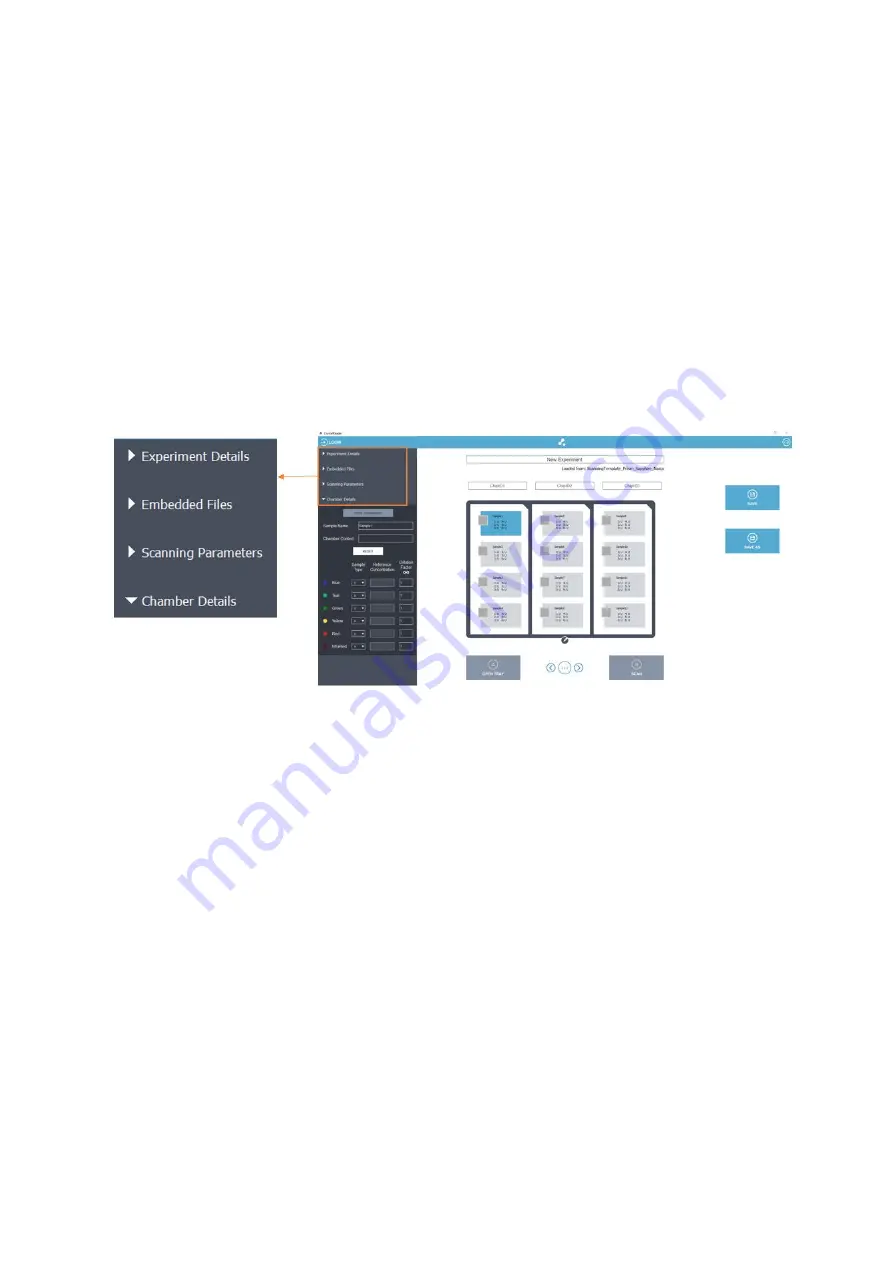
Prism6 & Crystal Reader software User Manual
20
If different scanning parameters or experimental details are to be applied to the same set of
samples for an experiment chips can be scanned up to three times within 48 hours following the
first scan.
f. Experimental set-up with Crystal Reader software
The 5 main steps of the experimental set up for chip scanning using Crystal Reader software
include:
(1) Create a new experiment by selecting the scanning template file
(2) Confirm or modify the experiment context in the Experiment Edition page
(3) Define chamber details
(4) Launch the experiment scan
(5) Evaluate scanning performance
Overview of the Edit experiment page where the experiment set up will be
done:
Figure 5: The Crystal Reader new experiment screen. The example visualizes the experimental
set up for a Sapphire chip experiment. The categories on the left panel can be edited for each
experiment.
1. Step (1) - Create a new experiment & define the experiment context:
Each experiment starts with the selection of
the scanning template (“.ncx” format) for an
experiment. The scanning template contains all the information and components required to set
up an experiment consistently and quickly
It consists of loading a
“.ncx” as an empty experiment and the user is then invited to modify or
add the data corresponding to the experiment.
Information that can be included in an
“.ncx” template:
-
Experiment details
-
Scanning Parameters
-
Embedded files:
o
Image Analysis Configuration file (
“.yaml”), corresponding to a set of chip type,
scanner type and mix type
o
Spillover Compensation Matrix (
“.ncm”)
o
Crystal Miner Analysis Configuration file (
“.nca”) containing the zoning (thresholds
or polygons) and populations settings






























